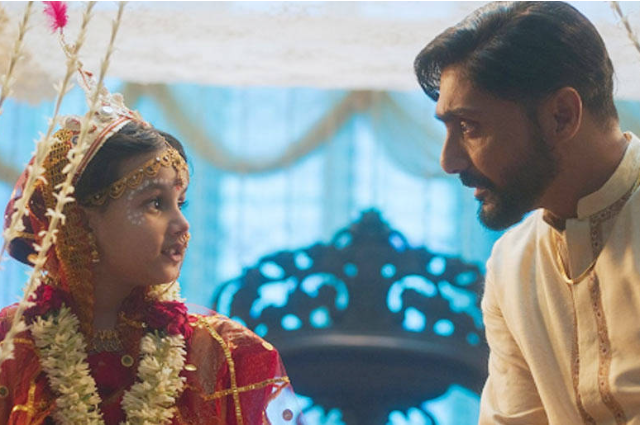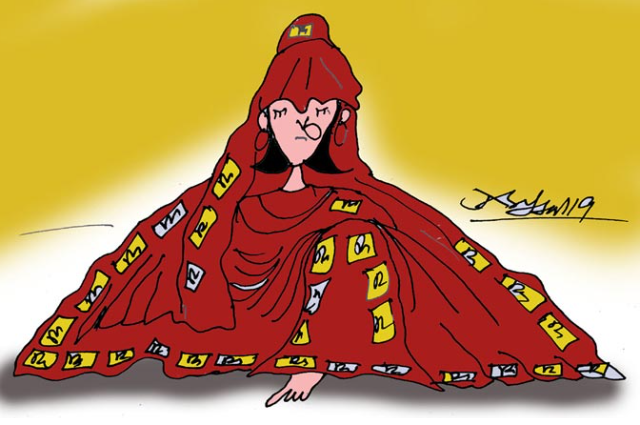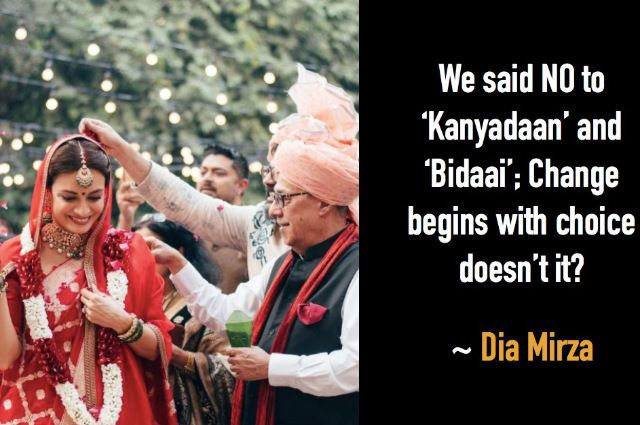Background
“Kanyadaan” is a Sanskrit word meaning ‘to give away the daughter.’ The term ‘kanya’ means girl, whereas ‘daan’ signifies donation. Kanyadaan is a significant ritual in Hindu weddings where the bride’s parents give her away to the groom. But it is much more complicated than it sounds.
When we ask our elders about the reason behind such traditions and religious practices, they instantly start quoting stories from our age-old scriptures. When I started asking questions about Kanyadaan, I heard different variations of why this tradition is practiced.
I was told that the significance of the ritual is that it depicts the marriage of the mighty couple, Vishnu and Lakshmi. The groom is seen as an avatar of Vishnu and the bride is considered to be Lakshmi. This is the reason behind the groom being worshipped during the wedding rituals. Because at that moment, he is seen as the incarnation of the operator of the universe. This story gives a divine tone to the marriage ceremony.
Another such story was of the king who was asked by the gods to sacrifice the one that is the closest to his heart. Nothing from cattle to his own son could satisfy the gods until he gave away his daughter saying that there was nothing in the world more precious than his daughter to him. Giving the daughter away is considered to be the highest form of sacrifice for the parents ever since. It leads them to the path of liberation. The ones that do not have their own daughter can practice the ritual in their relatives’ marriages.
Another reason behind Kanyadaan was that since girls in older times were married at tender ages, the ritual signified the transfer of guardianship from her father to her husband. The parents entrusted their daughter to the groom who will now stand by her in every walk of life.
However, it is noteworthy that the ritual has no mention in the Vedas, which were the foundation of Hinduism. Vedas gave importance to equality for women, their right to education, and their right to select their own groom. It was mentioned later in the Manu Smriti. The Manu Smriti or the Manava Dharma Shastra was written by rishi Manu as a compilation of rules for the functioning of society.
A Reason for Oppression
I am sure that the practice was started with good intentions, but over time it became a highly misunderstood subject. Society started viewing a girl child as a burden. The argument was that why waste so much money on raising a girl child only to send her off to another house. This was in addition to the hefty amounts demanded by the groom’s family as dowry. These are a few in the long list of reasons why women were considered to be inferior to men.
All this led to a number of evil practices in the form of female infanticides, child marriage, rape, domestic violence, and oppression in unimaginable forms. It was a general understanding that women only exist to give birth, preferably to a boy, and look after their families. And it was not appreciated if they stepped out of their primary roles.
The name ‘Kanyadaan’ also played a part because it was understood that the woman now belongs to her husband’s family to do as they please with her. It was a matter of shame if she wanted to come back to her parent’s house after marriage or wanted a divorce on the grounds of being tortured. At least this was the scenario in rural India, which is approximately 70% of the total population of our country, and most of urban India too.
Not Anymore
Times are changing now. We are now trying to leave the evil practices of our society behind to give our women the respect that they deserve. I am not saying that women all over the country are safe today, but the efforts to change things for good are appreciated. Social evils like child marriage and female infanticides are considered to be punishable offenses. Female education is promoted in villages with incentives like free meals. Families have started sending their daughters to cities for higher education so they can focus on their careers and be independent.
We live in this new world that is trying to evolve amid dynamic social conditions, trying to accept people for who they truly are, trying to be the voice of the oppressed, and trying to stand against injustice. If we can evolve then why can’t our cultural practices? After all, they are supposed to be a reflection of us.
It can be difficult for us to leave these practices behind as they are our roots, but giving them a new meaning can be something we can do. The ritual of ‘Kanyadaan’ should be renamed as ‘Kanyamaan’ for the right reasons.
Instead of seeing the daughter as someone who will leave her family to be a part of a new family, she should be honored for being the link that brings two families together. It is not easy to leave your home, your family, your comfort zone, to step into a completely new family and accept it as your own, but women have been doing it effortlessly.
And when it comes to being a support for parents in their old age, it is both the right and duty of every individual to look after his/her parents. No social practice should be able to take that away from a child.
In fact, the couple should come together to recognize and fulfill not two, but four of their parents’ needs. This is how we should raise our children, instead of telling our daughters that they are ‘ Paraya Dhan’, and would one day have to leave us and go.
Just by changing the name of a tradition, we can bring a progressive change in the mindset of the people over time. It might take some time and effort on our part but it can be a small step towards making a huge difference.




